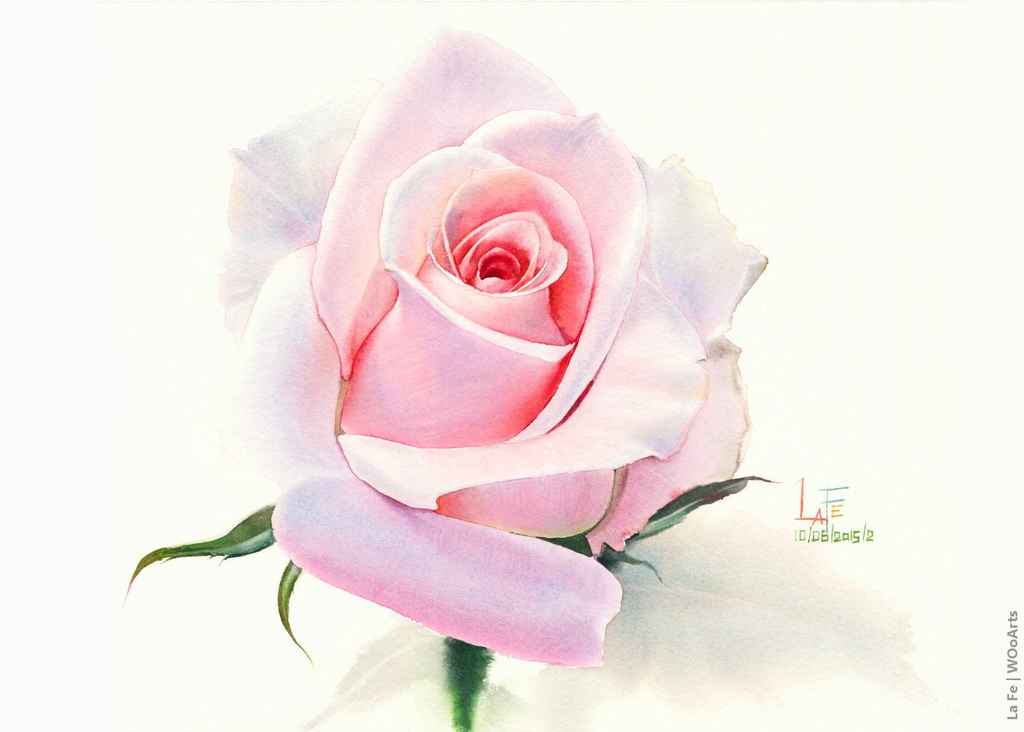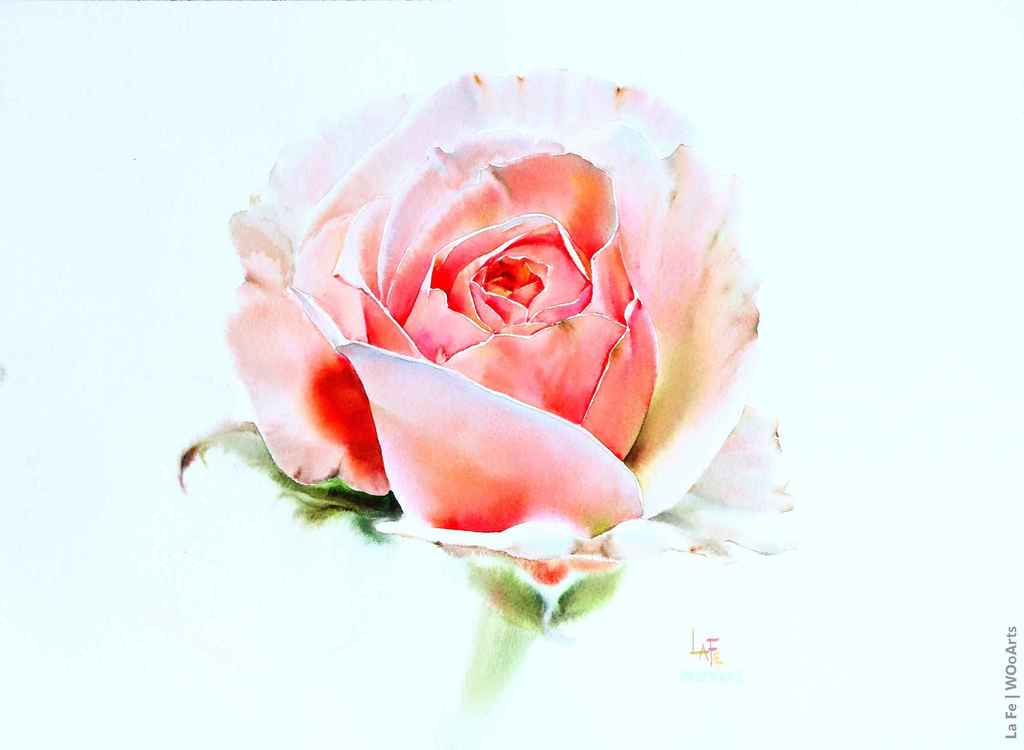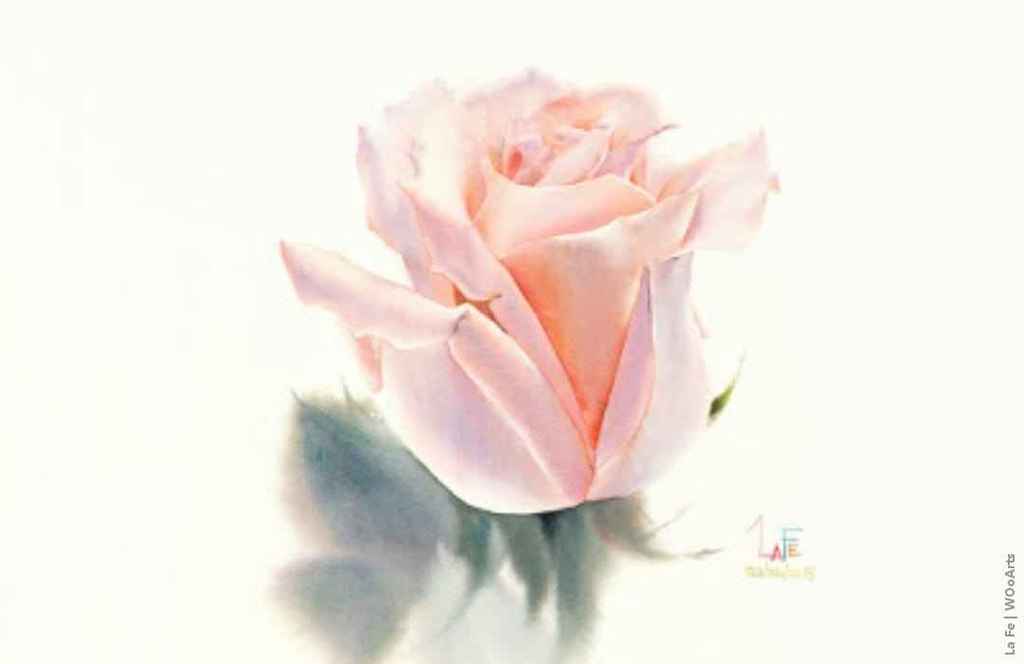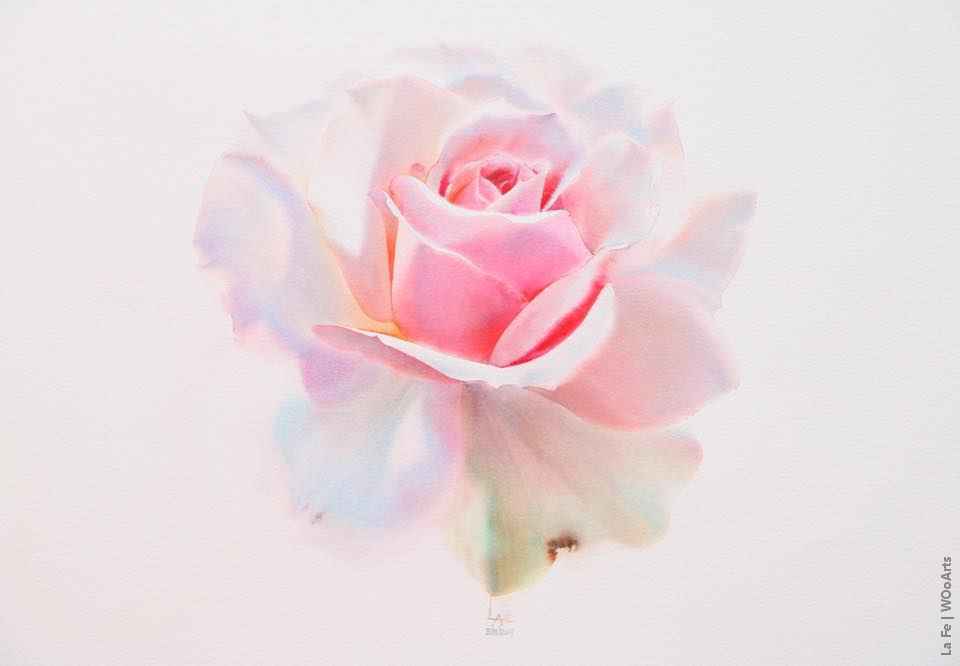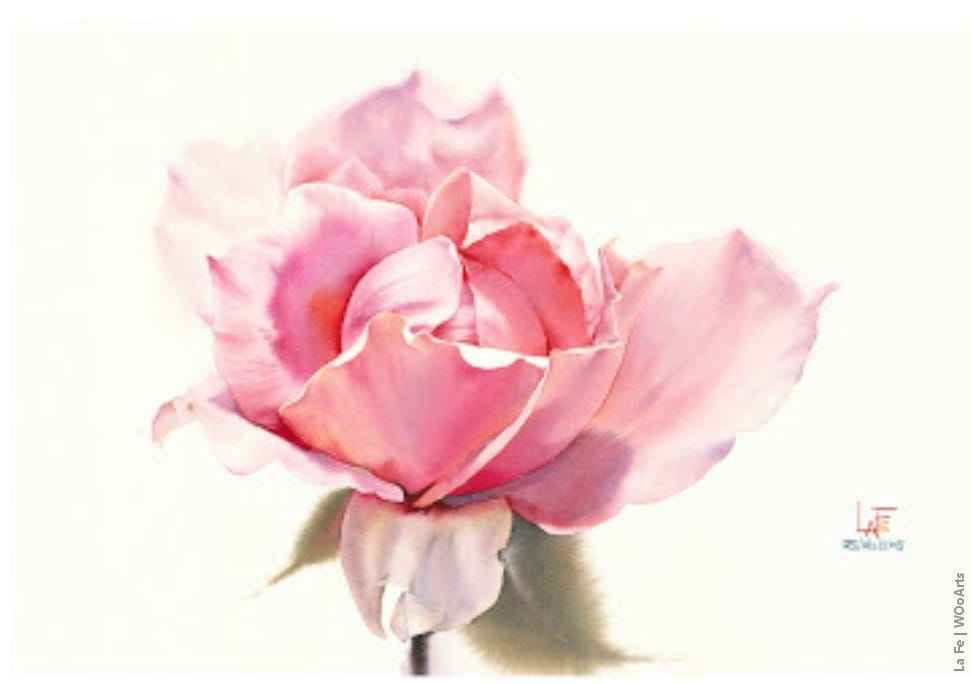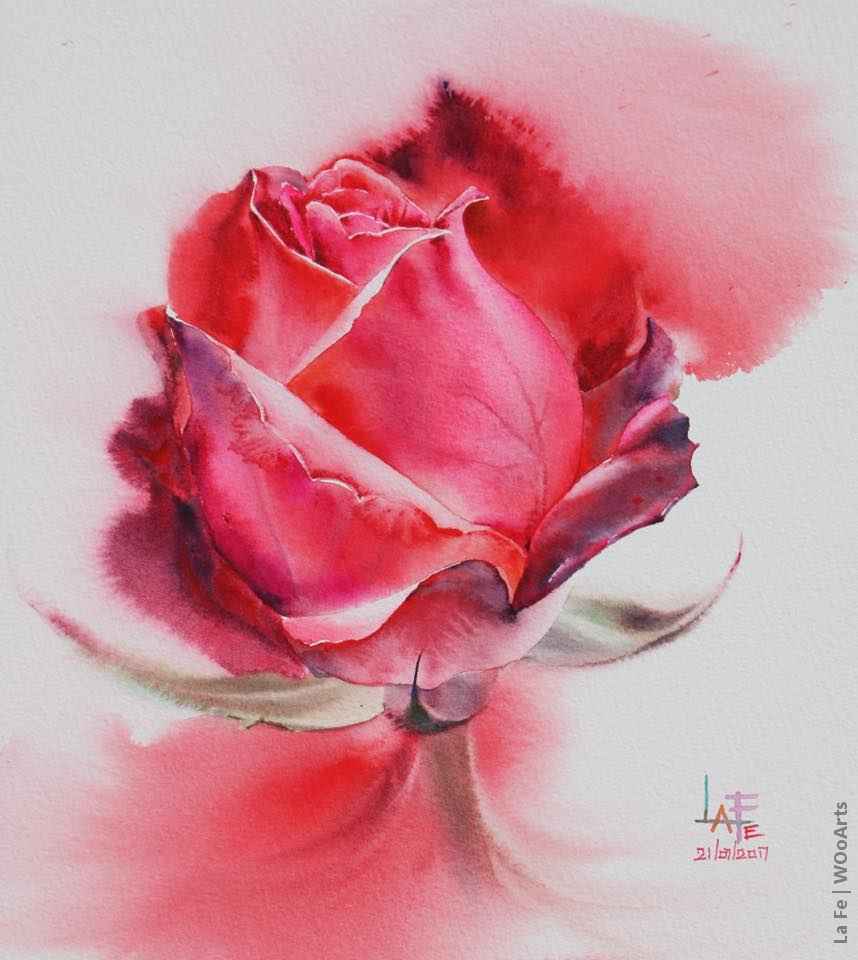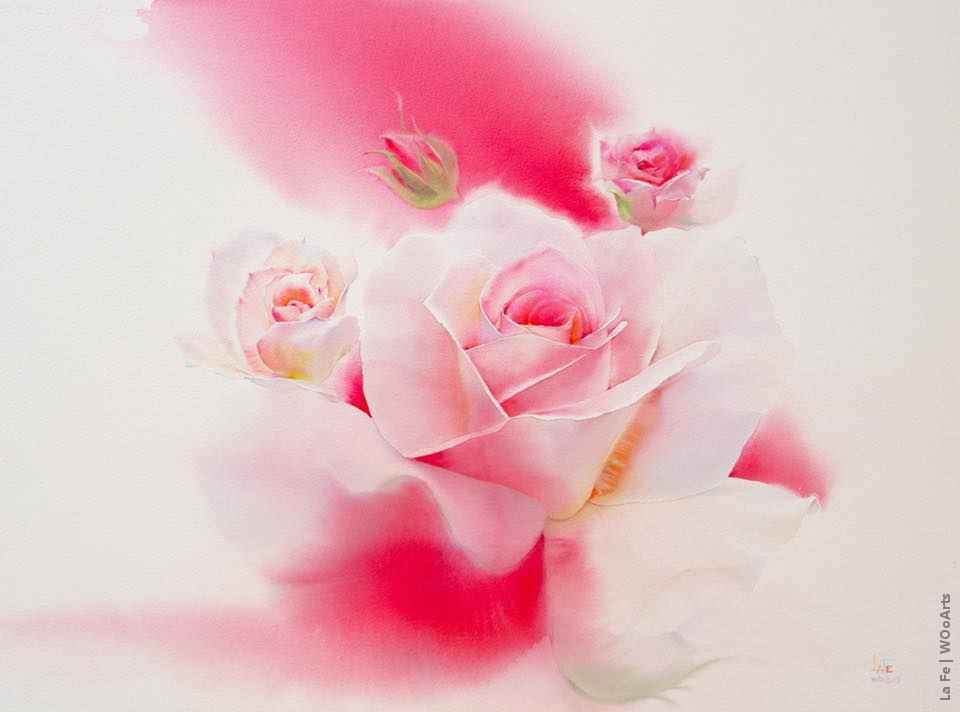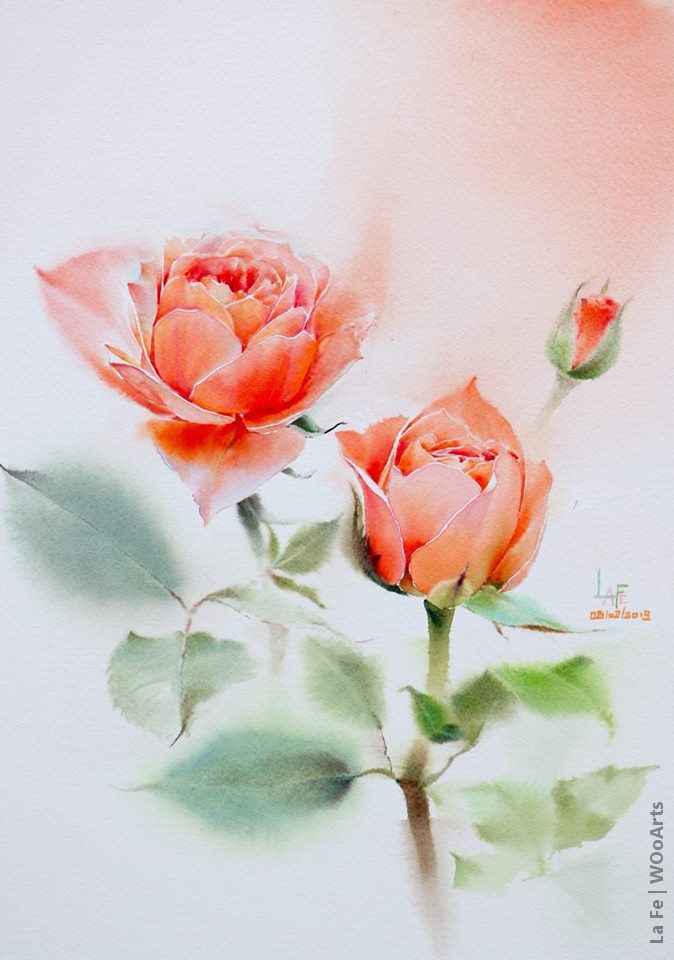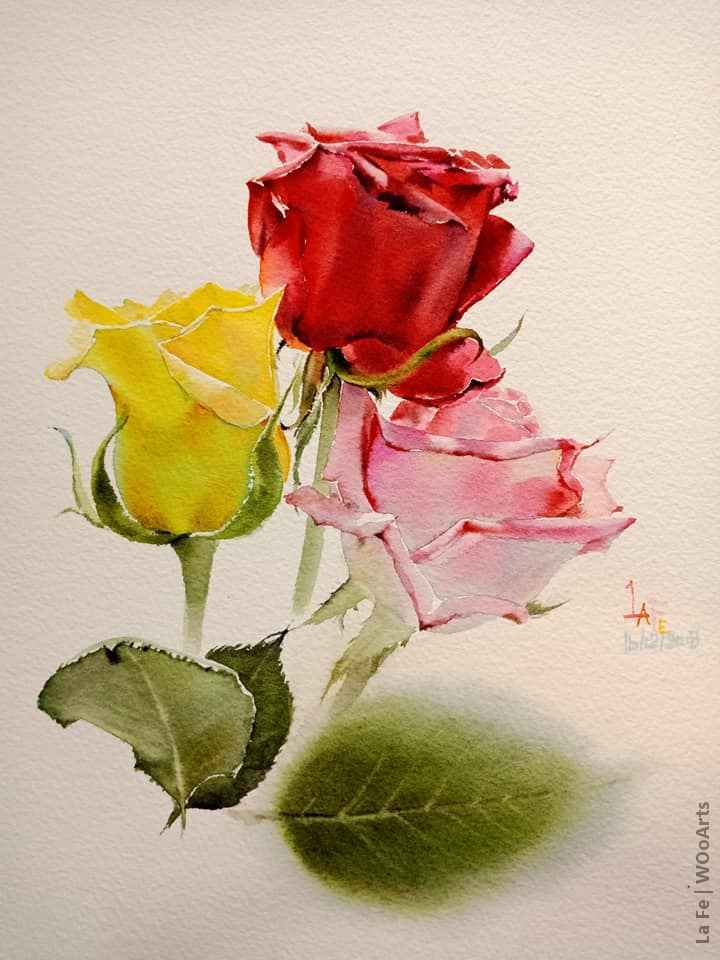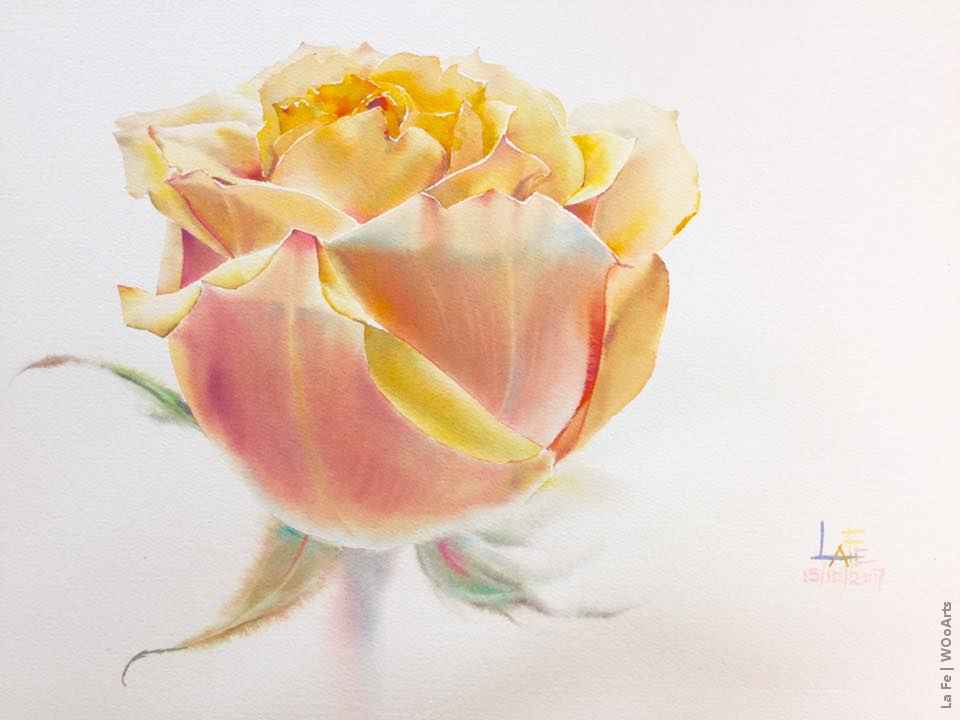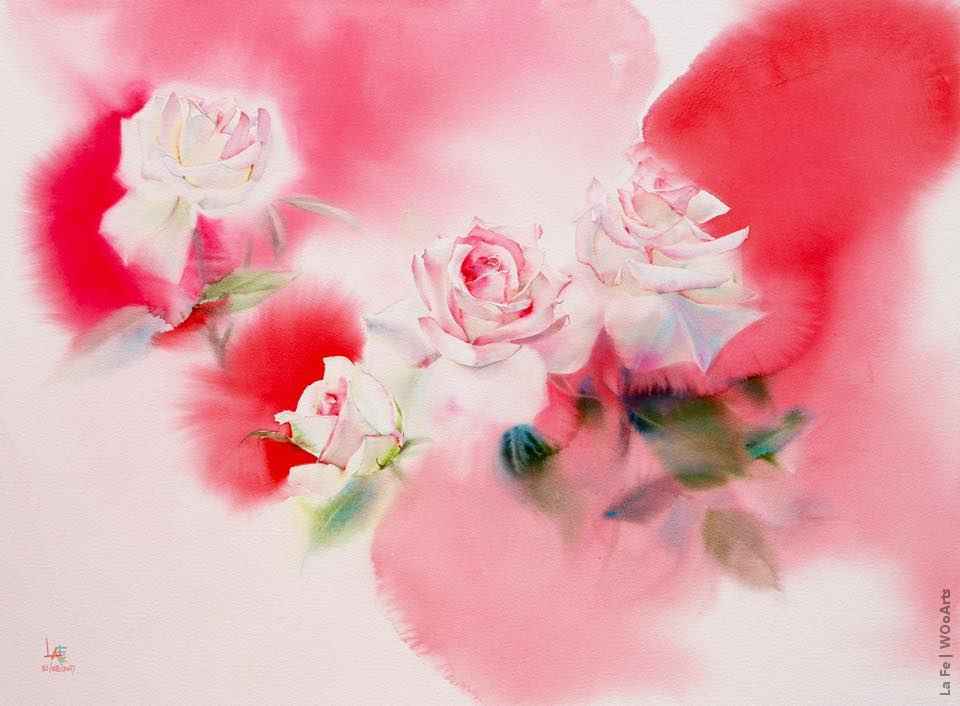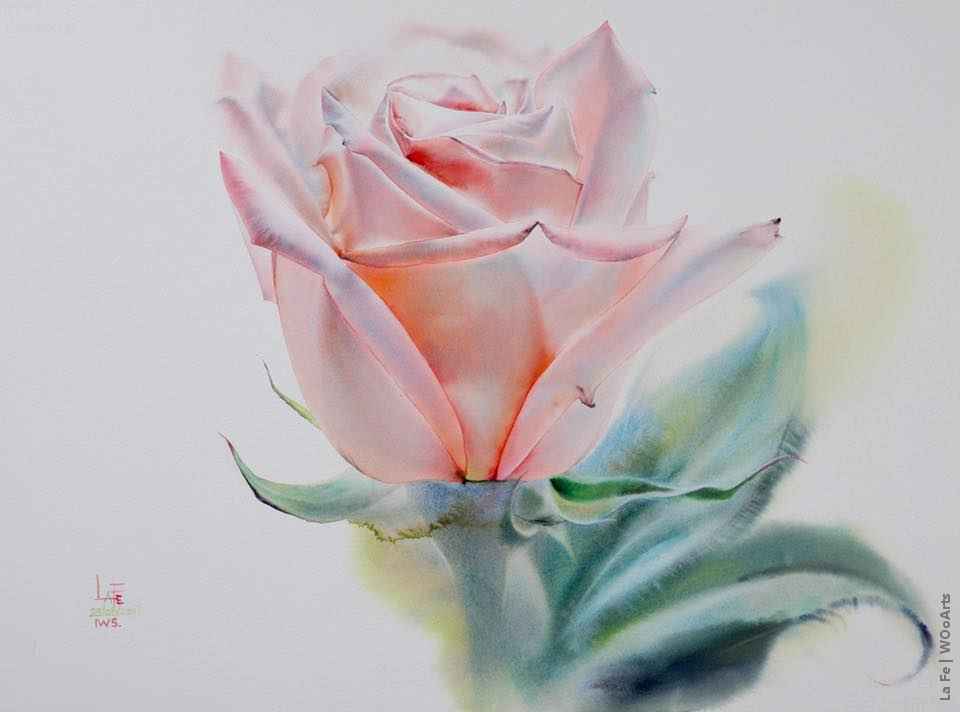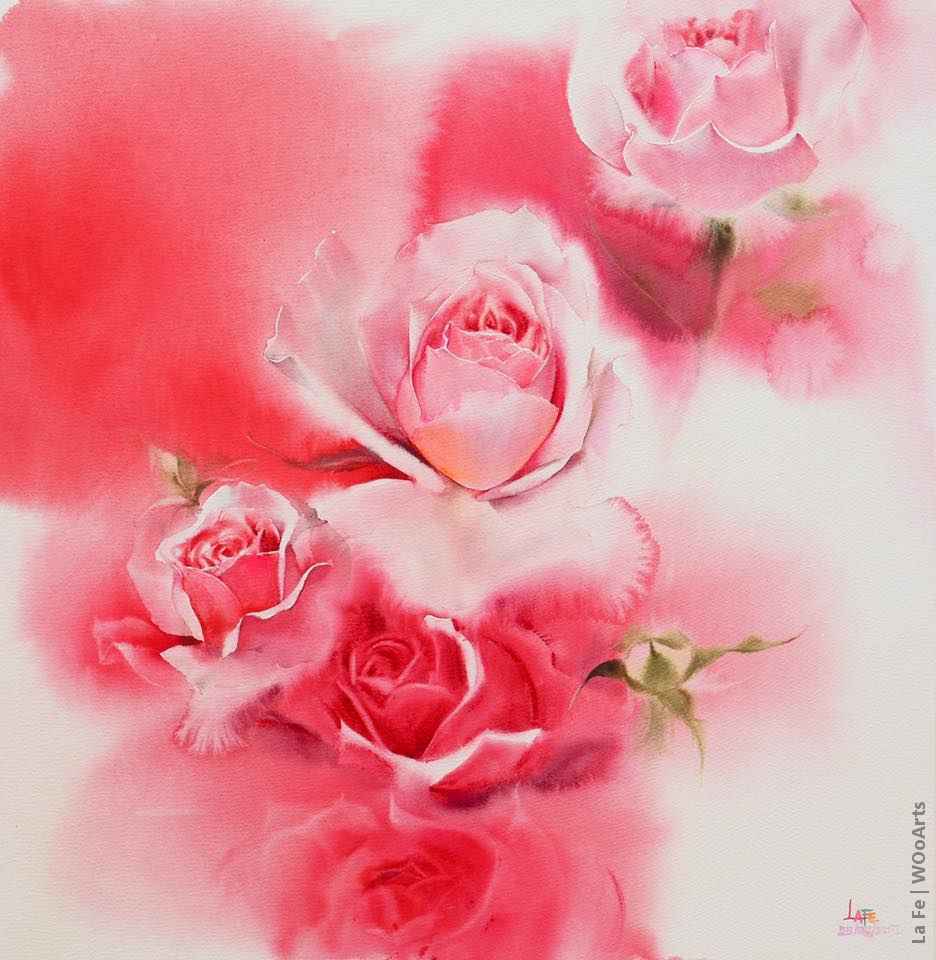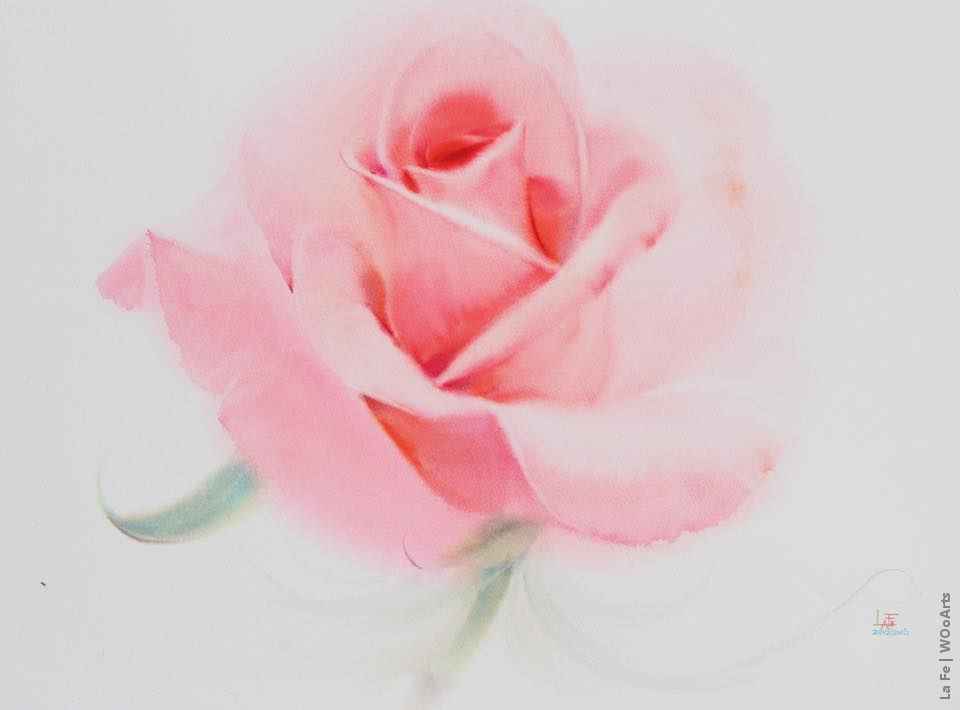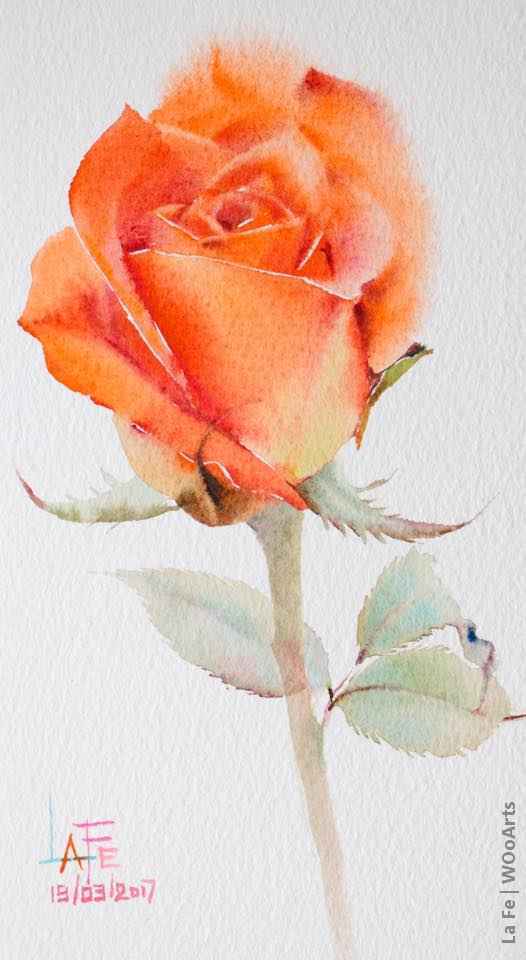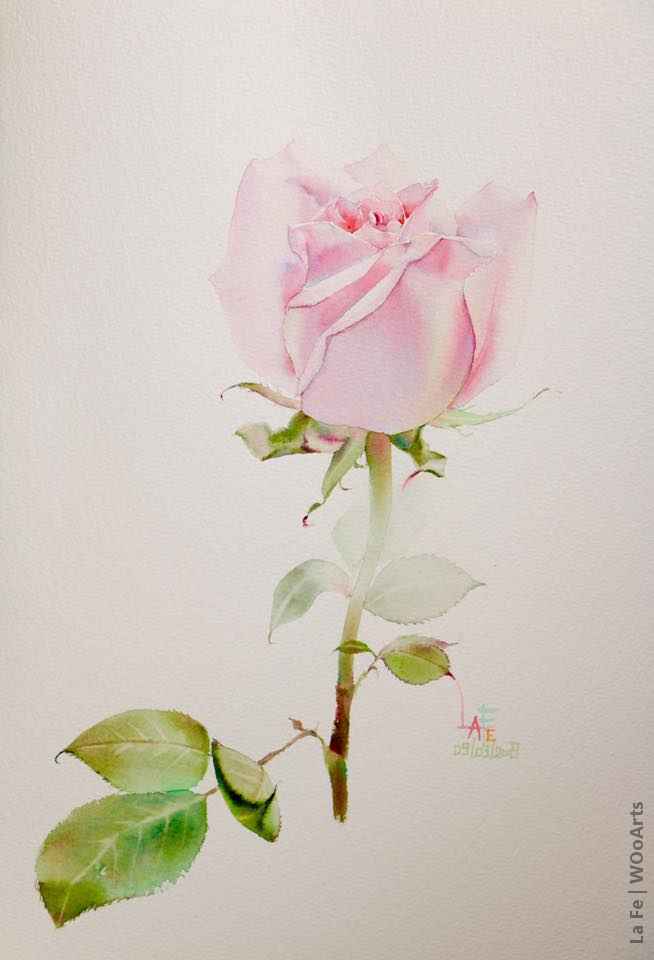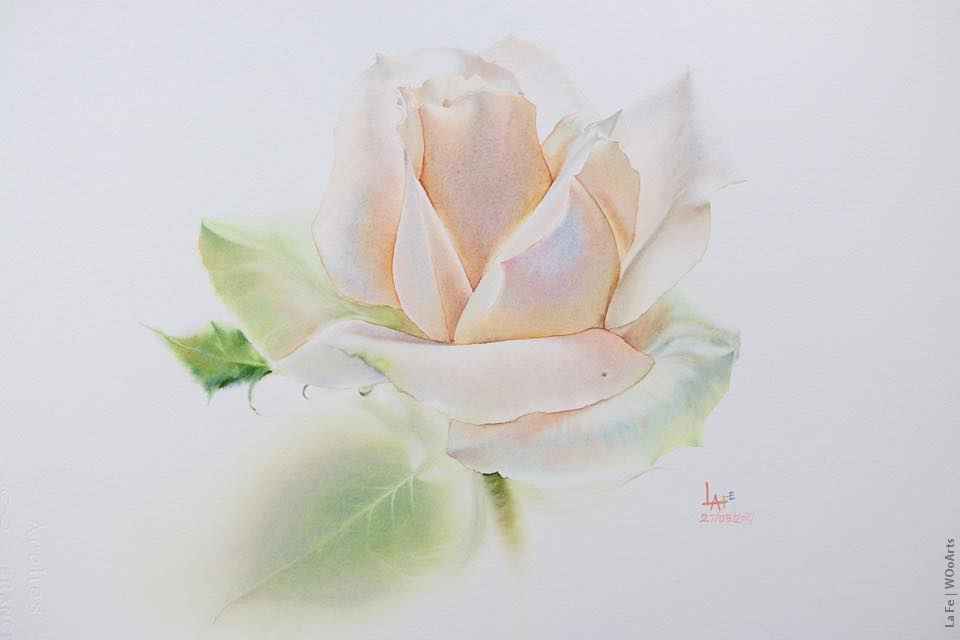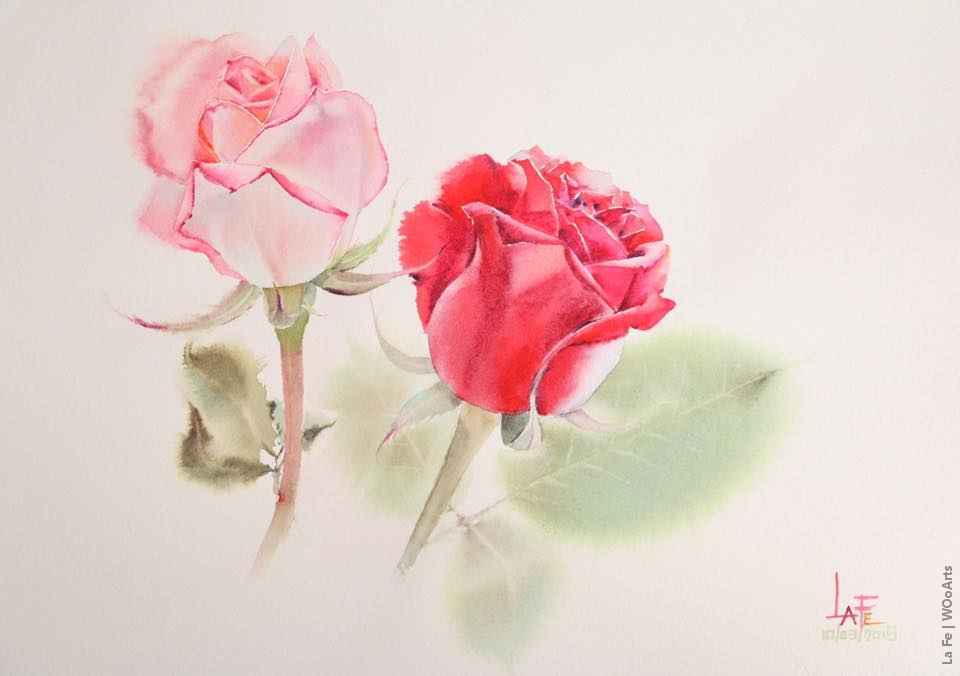la-fe-watercolor-painting-thailand-wooarts-com-01
คลิกเพื่ออ่านบทความนี้ เป็นภาษาไทย
On this occasion I would like to introduce an artist, Sattha Homsawat, to anyone who is fond of water color painting. He prefers to be called “LaFe.” He defines himself as an artist who connects worlds of water color paintings together. One of the leading Thai artists in the exhibition “World Watercolor Media Exposition 2014”, Sattha and other artists brought over 300 pieces of water color paintings to be exhibited at the RCAC Thailand. At this event, there were also over 100 visiting artists from various parts of the world. With relentless faith in connecting the transparency of watercolor which is capable of reflecting meanings of art works to audiences, as if watercolor paintings can reach minds of people with no difficulty, water color artists can happily dedicate time to their beloved works of art.
I met LaFe the first time in Chiang Mai when he went with his team to visit Pichai Nirand’s house near the foothills of Doi Suthep Mountain.
JY: Do you have any preferred name other than your first name?
SH: You can call me LaFe. It is a Spanish word which means faith. This name matches my Thai name Sattha which also means faith.
JY: This is the first time I’ve met the representative head of IWS (International Water Color Society) Thailand. Some columnists even call you “Thai artist avant-garde”. Apart from your artistic skills, I found that your success in the world of water color is quite impressive. I am glad to meet you in person today. Please tell me about yourself and how you identity yourself as an artist?
SH: I was born in Chanthaburi Province, Thailand. When I was young, I loved drawing so much that I decided to study Fine Arts at Silpakorn University. As an artist, I want to create paintings that people can look at appreciatively so they can understand the concept that water color paintings should represent creative ideas rather than the presentation of who the artist is. In my view, the works come first and the fame could follow later. Moreover, it is not necessary for art to contain hidden meaning that only the creator and expert artists can understand.
JY: How did you develop this concept?
SH: My previous experiences in water colors paintings made me feel that my real art concept is classic style. You can get inspiration from anything like forests, mountains and people’s movements. One good example here is a picture of boys in a pond. This is my memorable impression that I want anyone to see. At a certain point in my life, I started to look at the aim of expression in conceptual water color paintings. These are not only traditional thoughts and methods, but it also should be a new kind of thinking process in that we should not add anything more than necessary. This concept is also called “Modern with unpaint” which is to intentionally let a background to be white in order to make empty or pure space. This space can be interpreted as light or fresh air. After that, I have been fascinated by the method of painting water color without drawing that I use for my newer paintings.
Tomorrow I would like you to come see my live demonstration of my working method for some students at the Starbucks coffee shop in the Central Festival Chiang Mai department store. There you will see how I work and the method I use for my painting. Sometimes I am puzzled why artists spend so much time sketching very simple objects and then erasing them from drawing sheets or canvases after they apply some colors.
I definitely wanted to see the work demonstration but at this time I followed him as he took some photographs at Pichai Nirand’s house. I clearly saw his passion and motivations to take photographs which was not so different from his painting.
The next day, I met LaFe again. This time I talked to him while he was working on his paintings and enthusiastically explaining his artistic concepts to me and some of his students. His teaching method is straightforward and looks simple enough to follow. It is water color painting without drawing.
JY: Define your style of painting further?
SH: My works are created within a framework I invented for myself. I would call it “Hybrid Painting,” which is composed of water color painting, action painting and conceptual art. These three components are my working principles. I prefer to use water color for my paintings due to its transparency property. Action painting is using watercolor without drawing. For me, I am discouraged when I try to sketch something with pencil and this prevents me from applying watercolor in my painting. So the sketch phrase is no longer essential for me. Without pencil sketch, I am also excited every time because I cannot predict the result of my painting. For the conceptual art, I have three things to accomplish: The first one is that I create great quality of artwork. The second one is that my artworks give positive vibes to audiences and the last one is that my artworks are friendly to the environment.
JY: Tell me more about painting water color without drawing.
SH: Recently I began giving more importance to painting flowers and stopped doing all classical style paintings altogether. I felt that I had to paint pictures of roses that were clearer and more remarkable. I call this conceptual water color painting art. There are two concepts to be considered. The first one is “Watercolor without drawing” and the second one is “Modern with Unpaint”. For the first concept, we should give up the drawing step because we do not want drawing paper to be damaged or dirty during the removal of a pencil sketch with an eraser. For the second concept, we also need a white background to stand for empty or pure space. I want to convey the bright light and pure air in my imagination. This also covers the fragrance of roses that we can sense imaginatively. Simulating natural light is preferable when you work indoors so that you feel more comfortable.
JY: About pictures you use for references. Where do you get them? Or do you use real flowers?
SH: Actually I use both. I usually use real flowers as a reference but sometimes I use photographs. However, it is significant that the feeling must be real and you have to learn only from nature. Both real objects and photos have their own advantages.
In my view, water color is the technique that creates the atmosphere. It seems as if we might be able to breathe some air from the watercolor painting. This is the most important step in my thinking process for the paintings. Then we can use a reference from a real object or photograph. Normally I prefer to use the real object as a reference but using photos as reference can give you different perspectives for the same objects. Finally, I can add my imaginative feelings to every painting of mine.
JY: Do you have any preferred brand of colors, brushes and drawing paper?
SH: For painting equipment, it depends on the kind of work. I use many brands of water colors and brushes but I use two brands of paper. They are Arches and Fabriano.
JY: When are your next art exhibitions this year?
SH: In April – May I will go to exhibit my work in Russia, Italy, Switzerland and Turkey. In August I will be in China. In October I will exhibit my work on roses in Japan. In December 2015 there will be an art exhibition of the World Watercolor Society in Thailand.
There are many things that I am very certain about LaFe. I see his courage in the way he works. He encourages young artists who love watercolor painting. He also has a strong belief in a way of systematic working as he tries to convey his watercolor paradigm. Art is composed of the processes and independent ideas to convey satisfactory meanings and it has universal principles.
via: archives.scene4.com/2015/apr-2015/0415/janineyasovant0415.html
Gallery
